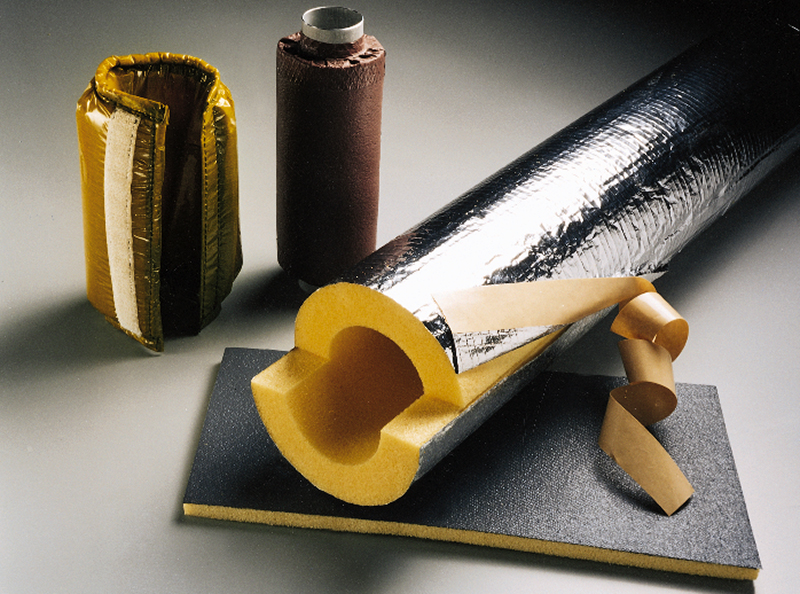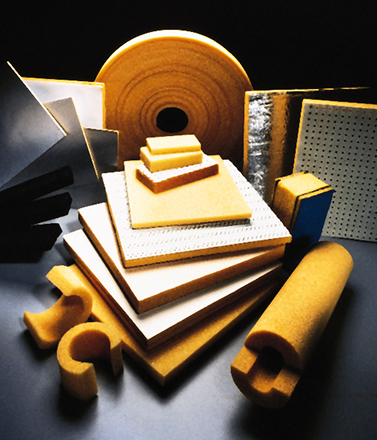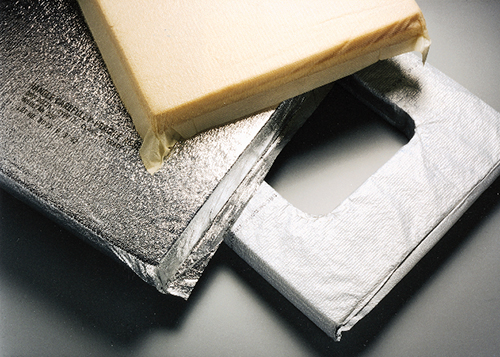
Foam: The “Right Stuff” for Extreme Environments
Minimizing fire hazards on the Space Shuttle has inspired production of a polyimide foam that is finding secondary commercial benefit as a lightweight thermal and acoustic insulating material.
Early in NASA's history, Johnson Space Center engineers called for a decrease in the flammability, smoke and toxicity of materials used in spacecraft. That need was adopted in the construction of the Space Shuttle fleet. Initial Space Shuttle uses of the foam were for thermal insulation, as well as packaging and protecting fragile equipment.
Manufactured for use by NASA, Inspec Foams Inc. (formerly named ImiTech) supplied the lightweight, fire-resistant. Inspec Foams is headquartered in the Dallas, Texas area. Two big pluses offered by the product are its exceptionally low density and low flammability.
There is no question, the harshness of space is tough on any material. Yet Solimide foam remains flexible and resilient, despite the wild temperature swings of the space environment. It has become the ideal choice for lightweight insulation in space applications. One such use is cryogenic insulation for fuel tanks on major rocket propulsion systems. Another is thermal insulation on the louvers of communications satellites where intermittent exposure to sun and darkness requires the responsiveness of the foam. Still another characteristic is its minimal outgassing. Therefore, contamination of delicate equipment and space sensors is one less worry. Solimide polyimide foam has been qualified for placement on Marshall Space Flight Center's materials specification selection list.
The foam technology is covered by several patents, some of them owned by Inspec Foams and others waived by NASA for Inspec Foams use.
Inspec Foams has established a manufacturing process that permits the material to be uniformly foamed. Solimide foam can be fashioned to carry an adhesive backing, exposed by peeling off an outer skin. A variety of densities and structural configurations can be produced, with the foam remaining resilient under exposure to temperatures ranging from minus 300 to plus 500 degrees Fahrenheit. Virtually no smoke or toxic byproduct is generated upon decomposition. Furthermore, the product's flame retardant qualities have prompted their application in ships and surface transportation systems, such as cars, trains, buses and automobiles.
The foam's properties also offer tremendous benefit in conventional insulation settings. It has good thermal and acoustical insulation properties; and the product is easy to fabricate and install.
There has been an outgrowth of uses for Solimide foam, stemming from the NASA work. Similar in need as that of the space agency, the U.S. Navy sponsored research by Inspec Foams to make new insulation systems for surface ships and submarines. Industrial uses include insulating supercold fluids on tanks, pipelines, and wind tunnels that apply the foam as expansion joints.
Inspec Foams has developed Solimide foams to give airframe manufacturers major weight savings, while retaining their good thermal and acoustical properties. For example, when used in place of fiberglass in the lower lobe of a 747, the foam can generate a weight reduction of over 400 pounds. Solimide foams allow aircraft manufacturers to improve the designs of their insulation systems at an overall reduction in installed and life-cycle costs. That also means fuel cost efficiency. Aircraft applications include cockpit and cabin insulation, ducting, bulkhead insulation and under floor insulation. Using the product are such aerospace giants as Boeing, Lockheed, and General Dynamics, along with international clients like Airbus, Bombardiar, and Dornier.
A wide range of the high-performance Solimide polyimide foams is presently available.

Initially developed for the Space Shuttle, polyimide foams are now in use in industrial and commercial applications worldwide.

Polyimide foam created for the Space Shuttle program can be fabricated for an assortment of industrial and commercial uses.

Space age polyimide foams can be shaped for easy installation and laminated with barrier film. The foam offers uncommon properties as an insulation material.













